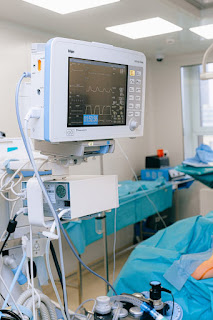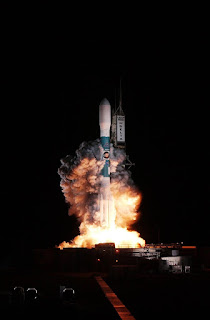Science & Technology
In human's
everyday life science & technology plays vital role. It impacts almost
every aspect of life including education, transportation, communication,
healthcare, research, business, infrastructure, agriculture etc. Sciences &
Technology affects human life positively as well as negatively. We lives in the
era of high speed Internet, where number of electronic modes of communication
such as social media and emails are introduced by technology. Technology has
improved humans lives. In the modern age no one is untouched by science &
technology. In fact today we cannot imagine our life with technology.
Use of
Artificial Intelligence (AI) has improved the efficiency. AI reduces cost of
implementation and save money. Here, we will see how science and technology
impacts on different aspects of human's everyday life.
Science & Technology in
Education
Technology
opens up new ways of teaching-leaning. Technologies incorporate class rooms
with digital content and digital devices like computers, projectors and other
hand held devices. Technology allows teaching and learning for 24×7 independent
from location of teachers and learners. Online teaching-learning can increase
productivity by increasing rate of leaning, reduces the delivery time of
learning material. Massive educational material such as books, audio, images,
videos are available at one’s fingertips over Internet.
Open Educational Resources (OER) are boon to promote digitalization of education. Open Educational Resources are license free resources useful for teaching-learning and research purpose; which are made freely available to everyone on Internet. OER includes lecture notes, textbooks, images, audios, videos etc.
Science & Technology in Health care
No doubt
Science and technology has great impact on healthcare services. Digital
technology could help to provide faster and effective treatments for diseases
like AIDS, CANCER or Ebola. Advancements in science & technology throughout
century led to big changes in medical sciences. Modern pathology was setup
because of cell theory. Stethoscope, blood pressure measuring instruments, use
of X- Rays, development of anesthesia, CT scan and MRI became remarkable
developments in medical technologies. Advances in surgical practices through
laser improved the way of surgery. Pacemaker is a remote monitoring tool which
is used by patient of heart disease. Pacemaker automatically sends data to
remote health centers. Wearable devices like wristbands and watches allow user
to take active role in their health. With the help of technology one can find
the structure of a virus which most required to develop vaccine for that virus.
Technological developments in medical science curing the diseases and improving
health of humans.
Technology in Academic Research
The use of
technology in research reduces the errors and gives more accurate results. It speeds
up the process of research. With the help of technology it’s easier to solve
big problem of science. Only because of technology we are able to do whether
forecast, to reach moon and mars and research in Deep Ocean.
Cloud
Computing technology provides on demand services to users through Internet.
Services include software’s, storages, databases, servers, and platform. Users
don't need to purchase their own resources and only pay what users access
resources. Artificial Intelligence
dramatically changed the business landscape. AI offers better speed and more
reliability. AI and Natural Language Processing (NLP) enabled robots are
capable to interact with human.
Technology in Transportation Industry
Now a
day’s progress of Business depends on fast transportation. How fast a company is
providing its services. Companies are deploying new technologies to improve
delivery of their services. 5G technology will catalyze the self driving
fleets. Tesla's electric semi truck has autopilot features. Artificial
Intelligence with sensors can correctly evaluate road condition and learn from
how drivers behave on roads. Vehicle to Vehicle communication allows vehicles
to share learned information. Another development in transportation for fast
delivery is delivery through drone. In 2016, Amazon had delivered first order
to its customer using drone in England. Amazon called new program as
"Prime Air".
New Transportation Technologies
1.
Self Driving Automobiles
2.
Smart Car
3.
Electric Trucks/Buses
4.
Droness
5.
Next-Gen GPS Devices
6.
High speed Rail Network
7.
Hyperloop
8.
Gyroscopic Vehicles
Technology in Communication
Communication
is another very important part of Technology. Technology allows one to stay in
contact with other regardless of time and location. Invention of Electric
Telegraph in 1831 was the biggest development in communication. Now,
Digitalization has superseded all forms of communication. Telephone was
invented in1849. Later Mobile phones and smart phones came. Since mid 1990 Internet has made communication much
fast and easier. Internet has revolutionary impact on communication by e-mail,
VoIP, video calls, social media. Optical fiber is a technology used for
fast communication, in which data (text, images audio, videos etc) travel in
the form of light along with long fiber. In satellite communication, artificial
satellite provide communication link between various points on Earth.
Technology in Business
Technology
has big impact on business regardless of size of companies. Technology provides
more efficient and faster transactions in business. Technology in business
includes Enterprises Resource Planning (ERP), Management Information System
(MIS), Accounting System and other tools. Technology provides automated systems
and increases productivity of companies. With effective business communication
among field worker, technicians don't need to travel physically. With the help
of technology, businesses have increased their reach in global market.
Companies have spread their business over Internet (e-commerce) because of
technology. Here are some examples of most commonly used technology and tools
in business.
1. Desktop Computers and Laptops Software and productivity tools
2. Networking
3. Communication
4. Accounting
System
5. Customer
Relationship Management
6. Inventory
Control System
Technology in Infrastructure Industry
Infrastructure
industry is key driver for the economy of a country. The industry is highly
responsible for propelling over all development of a country. Technologies have
transformed many industries in last decades. Infrastructure also benefited by
technological advancements. Technologies impact from first stage of design and
planning to last stage of maintenance of infrastructure. Modeling software’s
allows better visualization, better planning and forecast. Technologies impact
actual construction with new more efficient methods of construction and pre
fabrication. Moreover, Data for operation and maintenance can be collected
using drones and other sensory equipments. This would allow better monitoring
and forecast.
Following are six innovative technologies to
transform worldwide infrastructure (Source: World Economic Forum)
1.
Building Information Modeling (BIM): design that keeps tabs
2.
3D printing: taking the strain of construction
3.
Mass timber: the era of wooden skyscrapers
4.
Plastic roads: recycling under our wheels
5.
Block chain: streamlining contracts
6.
Replica: making passengers count
Science & Technology in Defense Industry
When all
industries are moving towards technologies to develop themselves, defense
industries have also been equipping themselves with latest technologies.
Technology has dramatically changed defense industry. Countries are trying to
accelerate their procurement models to get technologies into the fields.
Countries are spending billions of dollars to modernize defense.
Self guided missiles are capable of self
propelled. Missiles developed for different purpose: surface-to-surface,
surface-to-air (anti ballistic missiles), air-to-surface (ballistic, anti-tank,
cruise, anti-ship), air-to-air, air-to-satellite weapons. India developed
surface-to-air missile AkashNG, capable of targeting aircraft up to 30 km away
and at an altitude of 180, 00 meters.
Depends upon speed missiles are classified
as subsonic missiles speed less than sound. A supersonic
missile travels at the speed 2-3 Mach. Hypersonic missiles travels
at the speed of more than 5 Mach.
Science & Technology in Space
Space
technology is developed for the exploration of space and to develop space
infrastructure. Space technology includes spacecraft, space stations,
satellites and other supportive equipments. Services like whether forecasting,
remote sensing, satellite navigation system, satellite television, long
distance communication rely on space infrastructure. International Space
Station (ISS) is largest space station in low earth orbit. The space station
serves as home for astronauts. ISS also is a science lab in space. The
ownership of ISS is established by intergovernmental treaties and agreements.
Reach to Moon and Mars could become possible only due to space technology.
Space
tourism is to travel into space for recreational purpose. Space tourism
includes orbital, suborbital, and lunar space tourism. Orbital tourism is has
been performed by Russians space agency. Five space tourism companies: SpaceX,
Virgin Galactic, Blue Origin, Orion Span, Boeing.
I hope you
liked my blog on “Role of Science & Technology in today's life”. Tell me in
comment section your opinion about how technology impacts in your life
Thanking
You.





Blogger Comment
Facebook Comment